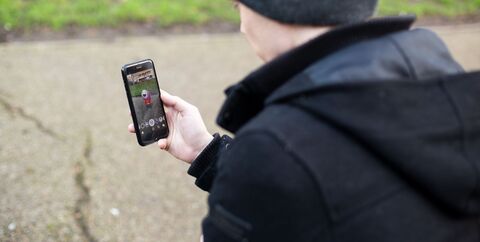Snapchat and augmented reality ads
Social media apps are at the frontline of technology and innovation. Social media networks’ main purpose is to connect anyone in the world, but digital platforms also strive to evolve and improve online user experience. We’ve spoken before about how Instagram is continuously introducing new features to its platform, yet it is just one of the world’s largest social platforms with a knack for fresh, techy thinking.
Snapchat is often left out of social marketing strategies due to the relative youthfulness of its largest user base as brands aim to target millennials who are more devoted to Instagram and Twitter. However, Snapchat has brought texture to the world of social media. Snapchat debuted the disappearing post mechanic, now extremely popular on Instagram, and pioneered face filters, a.k.a Snapchat Lenses. The platform is also building on the trend of social media-based television (several drama shows are now available in the app’s ‘Discover’ tab).
Snapchat’s greatest contribution to social media has implications beyond social media and finds weight in wider experiences of technology. Snapchat Lenses, which have provided millions of Facebook users’ bunny-eared profile pictures, have introduced us to the age of mass-market augmented reality (AR), available at the tips of our fingers.
AR involves the superimposition of digitally produced, virtual information over the physical environment captured in a camera lens’s field of view. In other words, AR takes computer-generated information and places it on top of real images. Now fairly commonplace in social media apps, AR is the technologically enhanced perspective of our world. Although Snapchat’s AR is more dinky and novel, unlike, for example, military or geological AR programmes, it is changing how we interact with our world.
What’s the big deal?
Snapchat’s AR capabilities have come far in the past few years. Starting with Lenses that imposed glasses onto your face or dog ears onto your head, users can now see their view of the whole physical environment change with an overlay of a clever theme or the inclusion of a few small characters going about their business. The best Lenses I’ve seen recently, for example, are a Lens including the Grinch knocking the head off my Bitmoji's snowman, a LEGO Lens of a car cruising along a road and a Lens with my Bitmoji dancing very poorly.
The main purpose of Snapchat’s Lenses are to entertain, as parent company Snap Inc tries to keep a grip on its regular, ad-watching users and tries to make them spend more time every day using the app. Beyond this, Lenses have made an important contribution to social media tech and the world: popularising and normalising AR in our daily lives. Now that everyone’s mobile phone is essentially an AR device, the medium regularly unites our experiences of the digital and real world.
Why should brands get their feet in the door?
Like all social media platforms, Snapchat sells valuable ad space to brands to reach millions of prospective customers. Snapchat’s ad space is different to other platforms in the creative potential that a highly visual app offers. Not only are ads shown among content found in the Discovery section, like ads on your Facebook or Instagram feeds, but the Lenses themselves become ad space - augmented reality ads.
Sponsored Lenses allow brands not only to advertise their products and services, but also to engender a higher level of engagement with branded marketing materials. Like and shares are no longer the social strategy - Lenses immerse your audience in the brand and your fans become brand mascots. Late last year, the platform released a Lens creator programme for anyone to use on desktop devices, allowing Community Lenses (from Snapchat users) and paid Lenses (from agencies and brands) to be accessible for users. This year, Snapchat also released the option for advertisers to include call-to-action buttons on sponsored Lenses. The proverbial fruit is ripe for the picking.
Snapchat has thus brought an established but largely unfamiliar digital technology to everyday social media use. AR goes beyond practical applications and is now being used for fun - and advertising. Although the platform is trailing behind the likes of Facebook and Twitter, its creative possibilities give it a unique advantage.
We're a creative agency in London and Singapore. We help our clients break through the noise. We'd love to hear from you so do drop us a line
